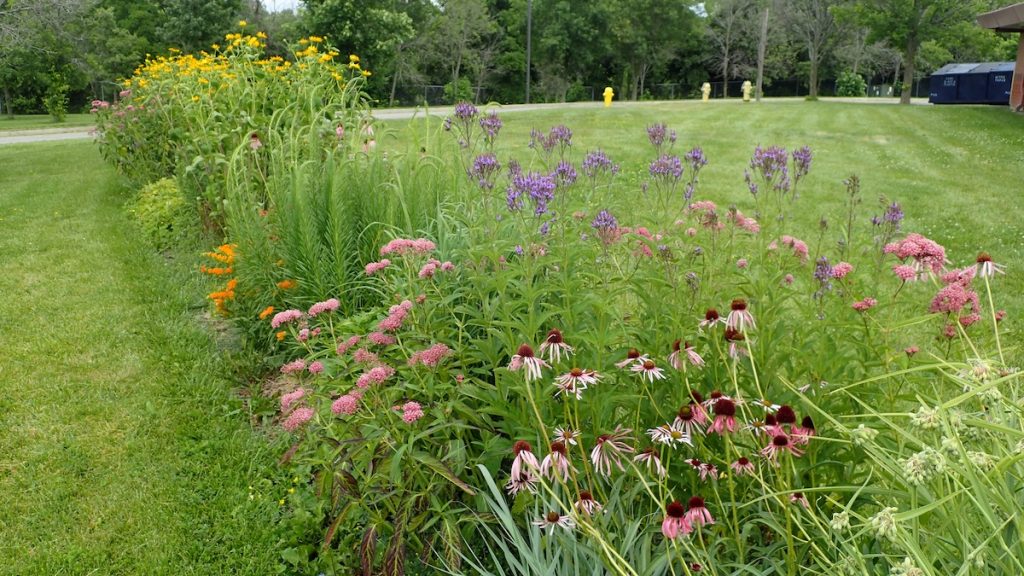
Our “native planters” it appears are under siege. We are now seeing with increasing regularity incidents where local authorities — HOAs and villages — citing and fining homeowners for the sin of planting native plants rather than conforming and keeping a lawn just like everyone else has.
Long Island helped to birth the modern suburb, and that very much included lawn. Arthur Levitt mandated that every house in Levittown would come with a grassy front lawn. Lawn care expectations were written into lease agreements and deeds. And so that aesthetic spread throughout the country and the world as an extension of The American Dream. Each his own fine trimmed lawn. See also: The Suburban Lawn Must Die.
The local codes that developed out of this Post-War bid for “middle class respectability” are still on the books, and as the native planter movement gathers steam, are ever more out of step with current tastes. Lawns, as we are finding, are also highly destructive to Long Island’s environment: They waste water, deliver excess nitrogen to our ponds, lakes, bays, and rivers, and also into our drinking water, and wash into all of them pesticide/herbicide runoff, further degrading our local environment.
They also rob local wildlife of habitat. We are seeing local wildlife populations of all sorts collapsing. Where once there was habitat, places for local wildlife to live, there is increasingly either lawn or blacktop. It doesn’t have to be that way. We can choose to plant native in our yards and create places for our local wildlife. This embrace of nature goes directly against the antiseptic aesthetic of suburbia. We need to become native planters, or see the rest of local nature vanish.
Would it surprise you to learn that Tim Burton, creator of Edward Scissorhands, grew up in Levittown?
People should have the right to plant what they want on their property rather than being held to a standard set over 70 years ago which science shows is destructive to the environment, and in a time when it is imperative for numerous populations that we are planting what will sustain them. Plenty of oaks for the over 560 species of caterpillars so that the songbirds can feed their nestlings at 3000-6000 per nest. We need to
Here is a recent example of how a municipal code can run up against the rights of “native planters”. We are supporting Aimee Kemp in her effort to plant native in her yard. She and her family moved to Williston Park. Aimee, an environmental science teacher, became a “native planter,” much to the delight of her ever curious son. She educated in inspired her friends and neighbors, and loved her yard.
And so she was cited for having an unruly yard that didn’t conform to code, or so it has been alleged. People should have the right to plant alternatives to lawn. We need very much to replant native, and quickly.
There was to have been a hearing on the matter yesterday. As of now, I have no indication how that went. In any case and for what it’s worth, here is our letter of support for Aimee, hand delivered at Williston Village Town Hall yesterday morning for the evening hearing.
The fact is, our relationship with nature is changing rapidly as we witness it’s collapse on multiple fronts. There are things each of us can do right in our yards, in our communities, in our public spaces, to blunt this global wave of mass extinction we are in the midst of. What can each of us do differently? Plant native.
Your yard, your town, and the world needs replanting. We are seeing what happens when habitat disappears. We need to put it back.

